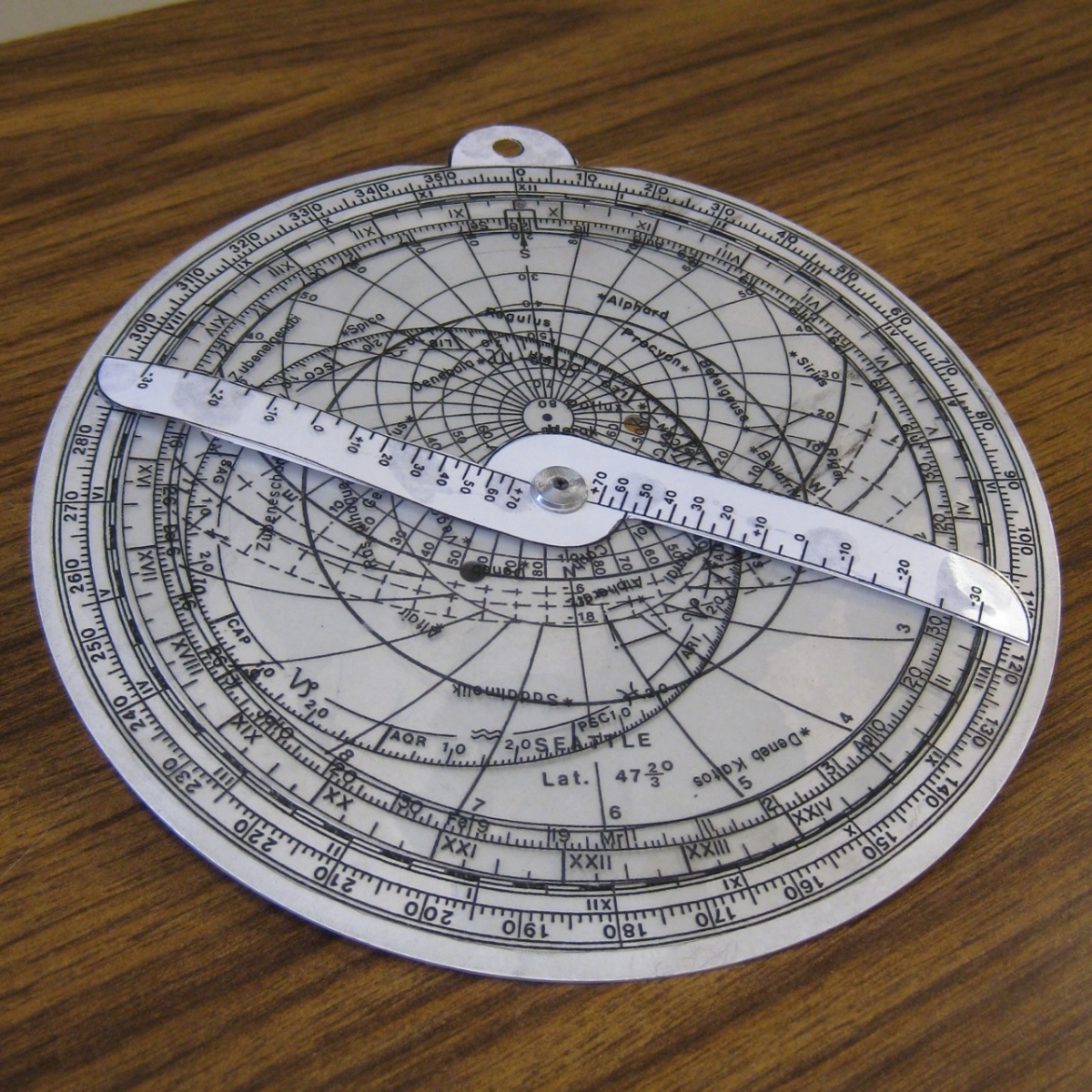- About MAA
- Membership
- MAA Publications
- Periodicals
- Blogs
- MAA Book Series
- MAA Press (an imprint of the AMS)
- MAA Notes
- MAA Reviews
- Mathematical Communication
- Information for Libraries
- Author Resources
- Advertise with MAA
- Meetings
- Competitions
- Programs
- Communities
- MAA Sections
- SIGMAA
- MAA Connect
- Students
- MAA Awards
- Awards Booklets
- Writing Awards
- Teaching Awards
- Service Awards
- Research Awards
- Lecture Awards
- Putnam Competition Individual and Team Winners
- D. E. Shaw Group AMC 8 Awards & Certificates
- Maryam Mirzakhani AMC 10 A Awards & Certificates
- Two Sigma AMC 10 B Awards & Certificates
- Jane Street AMC 12 A Awards & Certificates
- Akamai AMC 12 B Awards & Certificates
- High School Teachers
- News
You are here
Bridging the Gap Between Theory and Practice: Astronomical Instruments - An Astrolabe, a Jacob’s Staff, and a Telescope
An Astrolabe, a Jacob’s Staff, and a Telescope
Astrolabe
An astrolabe is a complex instrument that has multiple uses, including determining and predicting the positions of the heavenly bodies.
For more information about the astrolabe, the Museum of the History of Science at Oxford University has a website dedicated to the astrolabe at http://www.mhs.ox.ac.uk/astrolabe/. In particular, there is a presentation on how to use an astrolabe to tell time at http://www.mhs.ox.ac.uk/exhibits/using-an-astrolabe-1/. In addition, Convergence has an image of a beautiful Italian astrolabe from 1558 CE at http://www.maa.org/publications/periodicals/convergence/mathematical-treasures-italian-astrolabe.
One of the groups in Fall 2010 ambitiously decided to design an astrolabe. It soon turned out that computing the lines to be drawn on the instrument was a difficult task for the students, and, in addition, that etching them on the instrument would be impossible to do with the means at our disposal. We therefore decided to photocopy the model of an astrolabe in the textbook onto transparency sheets and then attach the sheets on a base of plexiglass. This provided us with a working and nice-looking astrolabe, though a consequence was that the astrolabe was configured for the latitude of Seattle, Washington, not Oneonta, New York.

Figure 9. Student-built astrolabe from Fall 2010 Ancient Mathematical Astronomy class (photograph by Toke Knudsen)
A photo of the astrolabe constructed in the course is shown above. It worked as it should.
Based on the students' work with designing an astrolabe in Fall 2010, I decided to recommend against choosing this as an instrument in Fall 2014 when one group proposed to make a large one out of wood (the group decided to design a quadrant instead).
Jacob’s staff
A Jacob's staff, also known as a cross-staff, is an instrument used to measure the angular distance between two heavenly bodies.
For more information about the Jacob's staff, Epact, an electronic catalogue of medieval and renaissance scientific instruments from four European museums, has an article dedicated to the cross-staff at http://www.mhs.ox.ac.uk/epact/article.php?ArticleID=5.
One of the groups in Fall 2010 decided to design a Jacob's staff. While both Anderson and I felt that the instrument was probably too simple, I allowed it to go ahead to get more experience with students designing instruments. For constructing the instrument, the students made use of only materials from a local office supply store, and no use was made of the 3D printer or other resources at SUNY Oneonta.

Figure 10. Student-built Jacob’s staff from Fall 2010 Ancient Mathematical Astronomy class (photograph by Toke Knudsen)
The above photo shows the Jacob's staff from the course. The instrument worked, though the paper on the smaller ruler was not stiff enough, nor attached firmly enough, to provide reasonable accuracy.
Telescope
A telescope is an instrument that uses lenses or mirrors (or both) to gather light, thereby allowing the user to directly observe distant objects.
For more information about the telescope, the Starry Messenger Project, developed by the Whipple Museum of the History of Science and the Department of History and Philosophy of Science at Cambridge University, has a website dedicated to the telescope at http://www.hps.cam.ac.uk/starry/galtele.html.
One group in Fall 2014 decided to design a telescope. Anderson and I were both positive about the idea. However, during the semester we found that we couldn't be sure that lenses bought online could be effectively fitted into the tubes we had available. As such, the group ended up purchasing and assembling a telescope kit instead.

Figure 11. Student-built telescope from Fall 2014 Ancient Mathematical Astronomy class (photograph by Toke Knudsen)
The above photo shows the telescope. The telescope is a refractor (rather than a reflector), meaning it uses lenses to create a magnified image for the user. The instrument was harder to assemble for the students than expected, but it worked. However, we did not have sufficient time (or appropriate weather) to fully test it.
Toke Knudsen (State University of New York at Oneonta), "Bridging the Gap Between Theory and Practice: Astronomical Instruments - An Astrolabe, a Jacob’s Staff, and a Telescope," Convergence (May 2015)




